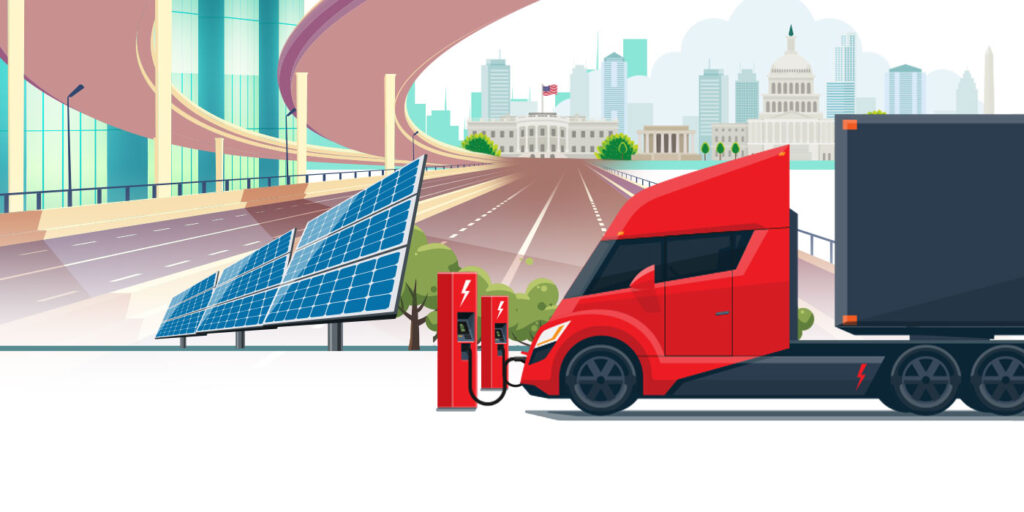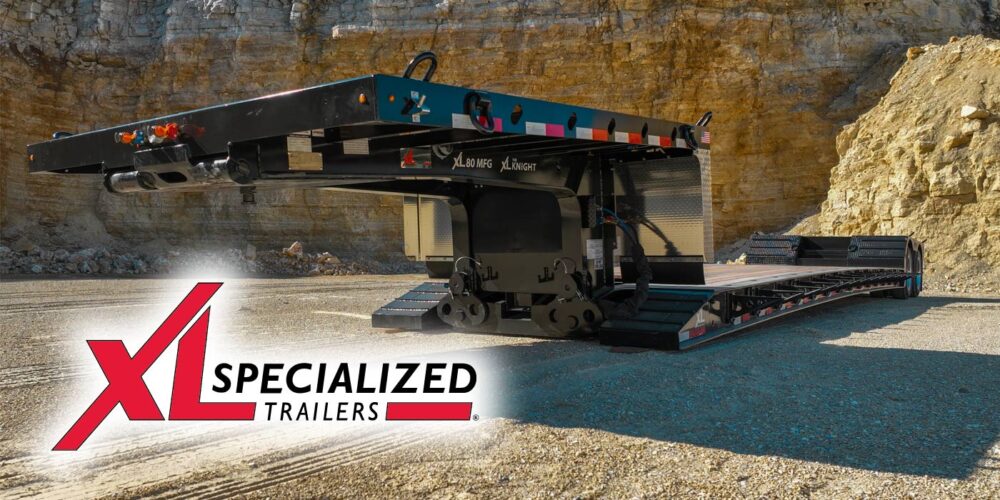The Infrastructure Investment and Jobs Act, or, more commonly referred to as the infrastructure bill, has many layers to it, but what lies at its core is the future of transportation and logistics funding. Investments in electric vehicle charging infrastructure and how EVs are transported are major areas of focus, along with critical funding for our nation’s roads, bridges and overpasses.
The $550 billion of new spending is broken down into a few key areas. Logistics companies are closely monitoring how all these changes will make an impact on the industry, especially during a time that is continually challenged by disruption. It’s important to also note a few of the lesser-known challenges and changes ahead.
Roads and bridges
A large percentage of the nation’s critical bridge system along the interstate highway network is nearing the end of its of 50-70-year lifespan, which is why $110 billion (about 12% of the total spending in the infrastructure bill) is designated for building and fixing roads, bridges and highways. Approximately 3.5 million truck drivers move freight along the country’s highways every day, and that’s why it’s critical to ensure our infrastructure is reliable and in good repair.
The $110 billion is a 38% increase from current road and bridge funding and from 2022 through 2026, at least $52 billion from the Highway Trust Fund will be spent every year for improvements and safety projects throughout the United States. An additional $600-700 million per year will be set aside for a bridge investment program that focuses on building and repairing bridges. Once construction is completed on more reliable roads and bridges, driving conditions will undoubtedly improve for everyone, not just carriers.
While the long-term impacts of the infrastructure bill remain to be seen, the short-term concerns are valid – as construction on roads and bridges all but guarantees significant roadblocks, delays along the country’s highway system, likely causing temporary backlogs and disruptions to an already-strained supply-chain
In addition, one crucial item that’s missing from the bill, however, is funding to help address the truck-parking shortage across the United States because expanding that parking capacity would have significantly helped carriers, especially smaller ones. According to the Federal Highway Administration (FHWA), there are only 313,000 truck-parking spaces currently available around the country—and that forces carrier drivers to park and stay in unsafe areas from time-to-time. For years, logistics and transportation providers have continually pushed Congress for additional funds to not only expand general truck-parking capacity, but also for safe, expanded parking and improvements at rest areas, which are common places for truck drivers to park and take breaks.
Investments in electric vehicles
Another significant piece of the infrastructure bill is funding to promote electric vehicle (EV) ownership, including infrastructure to support EVs and the country’s electric grid. In fact, there is $7.5 billion set aside to help create a nationwide network of EV-charging stations, with the stated goals of expediting EV adoption, reducing carbon pollution from the transportation sector, boosting the efficiency of cars and trucks and moving the country toward reducing greenhouse gas-pollution reduction by the year 2030.
The White House said funds will be used to construct a network of at least 500,000 EV charging stations strategically located throughout the nation, particularly along highway corridors, that can help with long-distance EV travel—as well as for local EV charging. The bill contains another $65 billion investment in renewable clean energy for the U.S. electricity grid, with high-voltage electric-transmission lines set to be funded and more money headed to various clean-energy technology projects. All this funding will eventually make driving and charging EVs easier for consumers and businesses that use them, while also further encouraging automakers’ already-existent efforts to move toward expanding and improving upon their EV production.
Shouldering the weight of transporting EVs
An important thing to note is because EVs weigh significantly more than their internal combustion engine (ICE) counterparts (their batteries are much heavier), carriers moving multiple EVs must pay attention to the overall weight of their load, ensuring they comply with the proper weight limit for their truck and area. Drive away carriers moving just one EV at a time won’t be impacted as much by the weight issue—however, they still will have to plan out where and when to charge the car that they are driving.
Heavy EVs can stretch capacity too thin, push the load factor down, cause damage to a flatbed truck or potential service issues along a transport route, and put carriers in violation of various compliance requirements throughout the country. Carriers do not want to face heavy audit fines for violating weight limits held by International Fuel Tax Agreement (IFTA) and International Registration Plan (IRP) regulations—or acquire additional fines for not following Highway Use Taxes (HUT) or Weight/Mile Taxes regulations where those apply.
Right now, Congress is looking at possible legislation to extend these weight limits, particularly for carriers hauling all or a majority of EVs. This is crucial because it effects the entire process of transporting these vehicles—from how long it takes them to get from Point A to B—to how much it costs the carrier to haul the vehicles away and the logjam limited weight capacities will have on the entire supply chain. Bottom line—without extended weight limits on our roads, there’s sure to be capacity issues, simply because carriers won’t be able to transport as many EVs compared to traditional, internal combustion engine-vehicles (ICEs). However, because this possible legislation is not yet law, the industry must continue to work around these EVs, the specific capacities their flatbed trucks can carry and various compliance restrictions that apply.
Other elements to watch
Beyond the funding for roads, bridges and EV-related infrastructure, the infrastructure bill also contains some other pieces that will impact carriers across the country. For instance, there is language around a new apprenticeship program to help address the shortage of available carriers—which would allow 18-to-20-year-olds to obtain a Commercial Driver’s License (CDL) before turning 21, as long as they follow certain safety regulations. An apprenticeship program such as this could alleviate some of the strains with the current labor shortage, especially as many drivers approach retirement age or left these jobs during the height of the COVID-19 pandemic.
The Infrastructure Investment and Jobs Act also prioritizes improving the broadband-internet infrastructure across the US. This critical but overlooked investment will most certainly benefit truck drivers who often travel through areas with limited to no cell phone or internet connection. The supply chain is becoming increasingly digitized, and as such, strong connectivity is crucial so carriers can share important information back and forth, as well as for ensuring digital operations continue to run smoothly. In short, any boost to internet access and connection strength, particularly in remote areas, would only benefit carriers’ ability to move quickly and efficiently.














